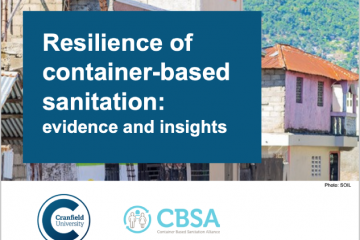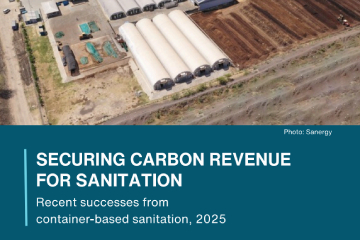A landmark 2023 study, Does “Low Cost” Urban Sanitation Exist? Lessons from a Global Data Set looks at real costs of sanitation systems and re-evaluates the notion of low-cost sanitation, concluding that thinking of sanitation systems as expensive or low-cost is not meaningful, with a range of well-managed urban sanitation systems – including CBS – typically costing Int$ 250–550 per household annually.
Real costs for meaningful decision-making
Too often, cost comparison analysis uses modelled, projected and/or incomplete data. One of the significant things about this paper is that it looks at actual costs from real operations, which is being collected in the CACTUS database. This tool is an incredible step change for informed decision-making in sanitation investment.
The myth of low-cost sanitation
The study reveals that no type of urban sanitation, from sewers to fecal sludge management, can be meaningfully described as low cost, with complete, well-managed, urban sanitation systems typically costing between Int$ 250–550 (2020) per household annually, with higher costs associated with systems that convey grey water (and sometimes stormwater) in addition to household black water. Importantly, technology selection is less critical than good management, with poor service coverage driving up the real costs of sanitation.
“Taking lifespan and total costs into account, CBS may be highly cost-efficient compared to other comparable services.”
Does “Low Cost” Urban Sanitation Exist? Lessons from a Global Data Set
CBS: cost-efficient, not cheap
It may come as surprising to hear us highlighting that safe sanitation is not low-cost – but this is actually what we have always said; CBS is cost-effective, not low-cost and this study helps to rid us of this unhelpful way of thinking. Safe sanitation needs a certain level of investment – but this comes with a range of health, environmental and social benefits which are more than worth it. The study found that the overall cost for CBS is relatively low (see figure 1) despite higher costs for CBS emptying and transport services, which builds on the findings of EY’s 2021 CBS cost-effectiveness study with CBSA members. It acknowledges that all the modelled sanitation chains are not directly comparable in term for the the service provides due to the different nature of the waste that they can convey but it found that CBS appears to be highly cost-efficient in relation to other comparable services. Regular emptying and well-managed treatment contribute to this cost efficiency.

Figure 1: Spread of cost liability per household per year for whole sanitation value chain (2020).
More data needed
While initial findings highlight the cost-efficiency of CBS, more data are needed. CBS services offer transparency with comprehensive cost data sets capturing all their costs, including essentials for safe, green jobs such as insurance, staff training, and health protections – factors frequently overlooked in other systems. However, the data set currently only contains information on two cases of container-based sanitation (CBS) providing shared toilets, whose median total cost liability per household is around Int $250 (2020). CBSA is working to support its members in supplying more data to the CACTUS database.
More data from other systems is also needed and the University of Leeds and Fresh Life are hosting three-day virtual training on Climate and Costs in Urban Sanitation (CACTUS). Find out more and register by emailing Citywise.


